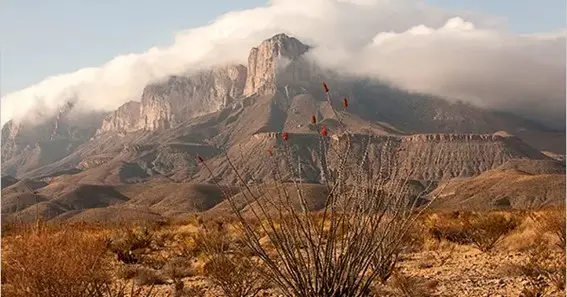Desert mountains, with their rugged peaks and stark beauty, offer a unique allure to adventurers and nature enthusiasts. These peaks on desert mountains stand as testaments to the Earth’s geological history and host ecosystems that thrive against the odds.
The Allure of Desert Mountain Peaks
Desert mountain peaks are characterized by their arid environments, unique flora and fauna, and challenging terrains. Mountains such as the Providence Mountains in California’s Mojave Desert and the Mule Ear Peaks in Texas’s Big Bend National Park exemplify the stark beauty and ecological significance of these landscapes.
Also Read : Embracing Coquette Wallpaper: A Guide To Romantic And Feminine Interior Design
Unique Ecosystems and Biodiversity
Despite harsh conditions, desert mountain peaks harbor diverse ecosystems. For instance, the Pinacate Peaks in Sonora, Mexico, are home to over 560 plant species and 222 bird species, thriving amidst volcanic craters and sand dunes. Similarly, the Nopah Peak in California’s Nopah Range supports unique plant communities adapted to its steep escarpments.
Also Read : Simplify Your Lifestyle with These Budget-Friendly Home Upgrades
Challenges and Rewards for Adventurers
Climbing desert mountain peaks presents unique challenges, including extreme temperatures, limited water sources, and rugged terrains. However, the rewards are unparalleled: panoramic views, solitude, and the chance to witness rare wildlife. For example, ascending Spirit Mountain in Nevada offers insights into Native American cultural significance and breathtaking vistas.
Conservation Efforts
Preserving these unique landscapes is crucial. Many desert mountain peaks are protected within national parks and wilderness areas, such as the Nopah Range Wilderness in California and the Spirit Mountain Wilderness in Nevada. These protections aim to conserve the delicate ecosystems and cultural heritage associated with these peaks.
FAQ
1. What defines a desert mountain peak?
A desert mountain peak is a summit located within a desert region, characterized by arid conditions, unique geological formations, and specialized ecosystems.
2. Are there any notable desert mountain peaks in the United States?
Yes, notable examples include the Providence Mountains in California and the Mule Ear Peaks in Texas.
3. What wildlife can be found on desert mountain peaks?
These areas host diverse species, including specialized plants, birds, reptiles, and mammals adapted to arid conditions.
4. What are the main challenges of climbing desert mountain peaks?
Challenges include extreme temperatures, limited water availability, and rugged, often unstable terrains.
5. How can one prepare for an expedition to a desert mountain peak?
Preparation involves thorough research, physical conditioning, carrying sufficient water, and understanding the specific challenges of the chosen peak.
Exploring the peaks on desert mountains offers a unique blend of adventure, natural beauty, and cultural significance. These landscapes, though harsh, are rich with life and history, inviting those who seek to understand and appreciate their unique charm.










